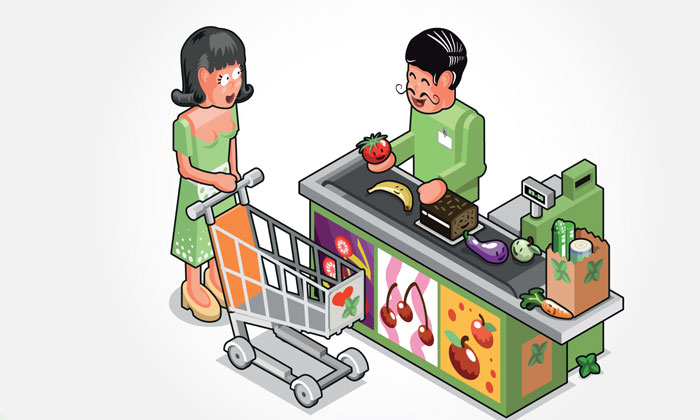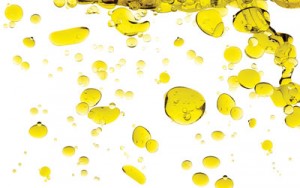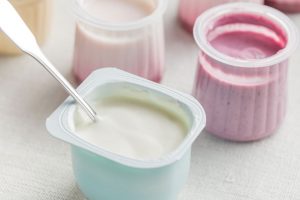Lifting the lid on the clean label trend
- Like
- Digg
- Del
- Tumblr
- VKontakte
- Buffer
- Love This
- Odnoklassniki
- Meneame
- Blogger
- Amazon
- Yahoo Mail
- Gmail
- AOL
- Newsvine
- HackerNews
- Evernote
- MySpace
- Mail.ru
- Viadeo
- Line
- Comments
- Yummly
- SMS
- Viber
- Telegram
- Subscribe
- Skype
- Facebook Messenger
- Kakao
- LiveJournal
- Yammer
- Edgar
- Fintel
- Mix
- Instapaper
- Copy Link
Posted: 16 February 2017 | Lindsey Bagley, BA, CSci, FIFST, Flavour Horizons | 2 comments
Clean label is no longer a trend – it is now the rule and accordingly New Food asks Lindsey Bagley, Flavour Horizons, to delve deeper into one of the industry’s definitive trends…




When it comes to delivering health and wellness consumers are looking to the ability of real food to provide nutrients and health benefits naturally. Actively limiting processed foods is the third most recognised adjustment consumers are making towards a healthier lifestyle after eating more vegetables and fruit.
In this article, Lindsey Bagley, Flavour Horizons, analyses the clean label trend and the extent to which it will continue to grow well into 2017 and beyond…
We consumers are making an effort to eat more food and drink naturally rich in nutrients and looking for minimally processed foods. The desire for natural functionality from food-derived, naturally occurring, nutrients is even impacting upon core supplement users who are questioning the bioavailability from supplements. There is an overwhelming move to derive all nutrients from diet where possible.
This has resulted in a major reformulation activity which has ricocheted across the whole of the industry. Manufacturers are continuing to seek fulfilment of customer requirements for convenience, but they are also taking a more critical look at their formulations. This ‘spring cleaning’ process begins by studying all ingredients for their contribution and rationalising those that have only limited or historical value. Many formulations have become overly complex after successive ‘tweaks’ to achieve production efficiencies or deliver marketing claims and as a consequence they have often become over complicated, containing unnecessary components.


So it is out with the old ingredients and a review of the best options for desired functionalities to meet the demands of a new, more discriminating, consumer who is determined to minimise their exposure to chemical additives. We are all looking for minimally processed foods with simplified labels and the presence of any ingredients we cannot relate to implies ‘processed’. Any additional ingredients have to be explained, to be given permission, before they become acceptable. As consumers, we can then make an informed choice. Some of these shifts in ingredient acceptability will change the very nature of our foods for the foreseeable future.
Cleaning up labels is not about regulations, it is about perceptions and public opinion. There is no regulated position for a ‘cleaner label’ it is one of individual company strategy and consumer messaging. The descriptive or legal name for an ingredient can sometimes be enough to drive its positive or negative consumer acceptance.
Simplifying formulations also reflects consumers’ call for transparency; keep it simple, tell us what is there, not what is not; use ingredients that are not only safe (a given) but recognisable and wholesome.
Where once product developers were targeting only natural/additive-free/ store cupboard ingredients now the emphasis is on providing transparent ingredient information. The requirement is to provide information about and permission for ingredients which enable a vast number of products that are technically unobtainable without them. This in turn results in consumer choice and education.
There has long been the attitude in UK that E numbers are to be avoided rather than recognising that they reflect ingredients of known safety. After all, E numbers include materials such as vitamin C, oxygen and pectin, none of which cause consumer concerns but might do if they saw a product labelled with E300, E948 and E440. Companies will have their own internal lists of positive and rejected ingredients and almost certainly there will be exceptions and/or compromises.
“There is no regulated position for a ‘cleaner label’…”
The ‘big bang’ which has led us to this point was artificial colours, moving through flavours, sweeteners, preservatives and eventually to all food ingredients. The explosion has been catalysed by negative marketing claims (e.g. ‘no added’, ‘free from’) and an ingredient industry’s ingenuity to respond.
Colours
We eat with the eye first, the nose second and only then with our tongues. Colour has always been a recognisably important part of our sensory appreciation of food. Product developers have been able to make sure that the adverse consequences of processing foods on its natural colour could be minimised by the addition of effective colouring materials. For example canned peas are much less attractive without added colour to replace that lost in the heat processing. Colour is also lost over shelf-life and added colouring materials can adjust for that. Whilst mainly aesthetic, the addition of colouring materials undoubtedly makes a product more attractive. They also make a product identifiable as many soft drinks would be various shades of grey without added colourings.
However, this ingredient category has been placed under particular scrutiny ever since hyperactivity in children was thought to be associated with some azo dyes.
Tartrazine had the finger of blame pointed squarely at it many decades ago and mounting consumer pressure ensured that, in the main, it was removed from products on the UK shelves. A more recent study conducted by Southampton University concluded that this colouring and others are associated with hyperactivity in young children.
Now, when using the colours listed below in food and drink there is a requirement (subject to a limited number of exemptions) to include the additional information that ‘name or E number of the colour(s)’: may have an adverse effect on activity and attention in children.
- Sunset yellow (E 110)
- Quinoline yellow (E 104)
- Carmoisine (E 122)
- Allura red (E 129)
- Tartrazine (E 102)
- Ponceau 4R (E 124)
This has further fuelled the removal of artificial colours and driven their replacement with natural colours.
Technology enabled this as a wider range of natural colours was developed to support increasing technical demands. Substitution of artificial colours can, in the main, be achieved. There are compromises that need to be accepted, e.g. overall attractiveness, taste, stability and the additional cost, but it can be done.
The replacement of artificial colours and the consequent ‘no artificial colour’ claims have had a roller-coaster impact across the industry; now this becomes the new normality, rather than the exception.
In fact, we are now progressing to a new era of colour reformulation based on their complete removal or use of food extracts to provide colour and flavour.
Flavours
Flavours were the next category of ingredients to undergo the transformation to ‘natural’.
Flavours go hand-in-hand with colours in many confectionery items so it was a natural consequence to follow natural colours with natural flavours. The flavour industry had also developed the techniques and know-how to manipulate flavouring compounds to provide the required stability and quality without impacting prohibitively on costs.


Savoury flavours have also undergone a similar evolution with consumers’ expectations of natural, MSG-free flavours being driven by on-pack claims for its absence. This fuelled the belief that it was an undesirable component and should be avoided.
Again within this category natural flavours are the new norm and the new trend here is to have flavours derived solely from extracts.
Sugars & sweeteners
Refined sugars are heavily criticised for being nutritionally bankrupt, but high carbohydrate foods do have their place to play in the overall diet. Consumers generally consider honey, maple, palm or other plant sugars such as agave a more ‘natural’ source of sweetness even though they are still sources of ‘sugars’,
A ‘no / low added sugar’ position is often achieved with added, chemically derived, high potency sweeteners and or sugar alcohols and other bulking ingredients, so the options here have to be carefully explained.


The arrival of stevia sweeteners and potential natural sweetening systems have added a range of options to this category and natural sweetness enhancers are gaining ground in reformulation of beverages.
Stabilisers and thickeners
The scrutiny of ingredients applies equally to those which we rely on for thickening and stabilising foodstuffs.
Starch is generally a consumer friendly term as it is well understood; corn flour has been a store cupboard ingredient for decades. In recent times starches have progressed from the shortcomings of native starches through the performance enhanced chemically-modified starches back to native starches once more. Native or ‘natural’ starches are more consumer friendly compared to their chemically derived alternatives. The difference this time around is new science has been applied.
Native starches have been physically processed to provide the enhanced performance. Using methods such as heat and pressure, functionalities similar to those of chemically modified starches can be generated. These physically modified starches offer good freeze-thaw, high heat and acid stability.
Breeding programmes are also looking at traditional sources of starch such as maize, waxy maize, tapioca, potato and rice. By altering the amylose to amylopectin ratios their abilities to bind water and add structure to foods, under different processing conditions, is enhanced. Alternative sources of starch such as pea starch are also being investigated.
Another group of thickeners and stabilisers which are very consumer friendly are pectins; a cook’s ingredient for generations in jam making. Generally thickeners and stabilisers such as the natural gums and plant extracts are now preferred by formulators as their source is easier to explain to consumers.
Changing attitudes to ingredients is about education, so if celebrity chefs start using and explaining materials such as xanthan and gellan gums this makes them more acceptable.
Emulsifiers
Emulsifiers generally have very long, chemical sounding names, so this category has needed explanation and only now is science beginning to catch up with the technical and labelling requirements. Lecithin, which we as consumers understand, as it is naturally derived and has been used as a supplement for many years, fits easily into the ‘accepted’ category. However, it does not fulfil all the technical requirements we have for stable emulsions.


If we consider that this group of foods generically described as ‘emulsions’ includes bread spreads, ice creams, and mayonnaise we can appreciate the importance of being able to produce them efficiently and effectively maintain their shelf stability.
Recent innovations here include processing techniques for stabilising emulsions and also the use of novel, but consumer friendly, components such as fibres as emulsifiers.
Antioxidants and preservatives
The case for preservatives draws particular concern for food safety.
Where a preservative has an aesthetic impact, such as sulphur dioxide inhibiting browning in fruit and vegetable processing, this is not a potential safety issue. However where the removal of preservatives has the potential to result in microbiological spoilage and food poisoning then this is clearly a step to be taken with caution and the proper considerations. The ‘knee-jerk’ reaction to remove preservatives, with potentially lethal consequences for some unwary manufacturers, is not helped by claims of ‘preservative free’, on products which have never needed this functionality.
A number of new, naturally derived preservatives are being developed to enable more options for this functionality and are in the pipeline.
If consumers are told that salami without sodium nitrite carries a risk of botulism then they appreciate why it is needed and can decide whether or not they are happy to eat salami; the choice is theirs. The presence of nitrite is not a choice, it is a necessity.
Similarly bacon is not a possibility without saltpetre, aka potassium nitrate, and whilst this can hardly be considered a store cupboard ingredient we do not expect bacon to disappear from our shelves any time soon.
Fats
Hydrogenated fats, trans-fats, once the darlings of food manufacturers for their processability, stability, and versatility are now known to have negative impact on our health and have been progressively removed from our foods. Now, partially hydrogenated and inter-esterified palm fats are being replaced with physically fractionated palm oils. Different fractions providing the range of functions previously provided by hydrogenated fats.


We are on a mission to reduce saturated fats in our diet and some traditional foods will be phased out during this process as they become too difficult or impossible to provide in an economically efficient, shelf-stable form.
The use of sunflower, olive and rape seed oils, which contain fatty acids more prone to oxidation, have their limitations. Breeding programmes have developed strains of these oil crops with lower levels of polyunsaturated fatty acids. Now, sunflower oil is produced with more that 80% of the more stable mono saturated oleic, omega 9, fatty acid.
Future
Whilst it is difficult to champion reformulation for reformulation’s sake, this era of scrutinising ingredients has made manufacturers think how best they can formulate rather than most easily formulate products. Ingredients are being rationalised and we will end up with a tidier, more efficiently formulated range of foodstuffs on our shelves.
Coupled with nutritional optimisation, these activities are significant challenges to the ingredient industry and to product developers.
Formulation is not one dimensional; take out sugar you impact structure, stability, acidity, colour and flavour. Reduce salt you impact taste, stability and change the way starch behaves. Tackling these issues has driven a new level of science from the ingredient industry.
This is the unintended consequence of marketeers’ negative product claims fuelling consumer insecurities about the food industry and processed foods in general. However, it will result in a better attitude to product formulation in the future, a more transparent relationship with consumers about the need for ingredients and the compromises of their removal or avoidance.
New Food’s ‘Health Ingredients Month’
Tom Clifford, PhD, Sport and Exercise Nutrition, University of Northumbria – Can beetroot help relieve muscle pain after exercise?
Petr Menšík, Manager, EU Affairs, ECCO, The European Consulting Company – Defining the term ‘natural’ in food and beverage
Claus Andersen, Category & Application Manager, Arla Foods Ingredients – How dairy can lead a new waste revolution
Alex Murtough, Field & Marketing Manager, Oppo – Healthy food? It’s out of reach for most of us
Kevin Bael, Product Manager, Specialty Rice Ingredients, Beneo – The unique, natural value of rice starch
Andrea Zangara, Centre for Human Psychopharmacology, Swinburne University – Plant-based ingredients and their cognitive benefits
Marc Fremont, Ph.D. R&D director, VF Bioscience SAS – Cell culture: an innovative approach for production of plant actives










Very informative and well put together. I wish I had written this.
You definitely can’t expect a 180 change overnight in product formulations, but I agree we are on the right track for better ingredient usage in the future!